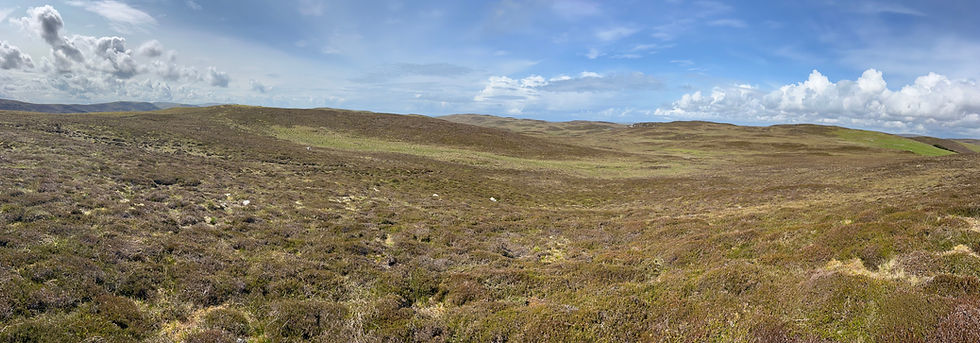Site in Focus - Fugla Ness Broch
- Stephen Jennings

- Mar 9, 2024
- 2 min read

A mile north of the ferry terminal at Toft are the remains of Fugla Ness Broch perched on the edge of the coast. Surrounded by two discontinuous banks separated by a wide ditch for most of its circumference, the eastern side of the broch mound is slowly being nibbled by the sea. Although difficult to detect from the old photographs, it appears to have been largely stable over the last century or so.

The site has drawn our interest, as many coastal sites do, because of the appearance of new features or structures with coastal erosion. In this case, late Iron Age architecture is starting to be revealed just inside the outer bank on the southern side of the site. Utilising edge-set slabs, flat stones of small to medium size have then been stacked horizontally to form the outer wall of a small cellular structure. Just beginning to show, it is unclear how much survives or how it is orientated without more intrusive intervention.

Alongside the various other interesting features in evidence, one of the more compelling finds during our visit was the larger portion of a trough quern. What is of note here is it seems to have been built into the broch wall, likely a portion of the outer wall.
We found the banks to be worth examination as well. The discontinuous nature, which is not unusual, may be a clue they were not intended to be fully, or perhaps even in part, a defensive measure. The wide gaps in the banks, from 3m to 6m with much larger sections absent or never existent, could indicate a more functional use. Filling those gaps may have been moveable sections constructed of wood or other organic materials. This would allow spaces to be opened and closed, sectioned, and made available for the movement of people, goods, and perhaps livestock between the spaces. This is, of course, under the assumption we are seeing the banks and ditch as constructed rather than a result of later modifications.
Without evidence of any substantial outbuildings in contemporary use, what remains of Fugla Ness indicates it was a standalone broch on the landscape perhaps in control of a more disbursed form of settlement in the surrounding area.







Comments